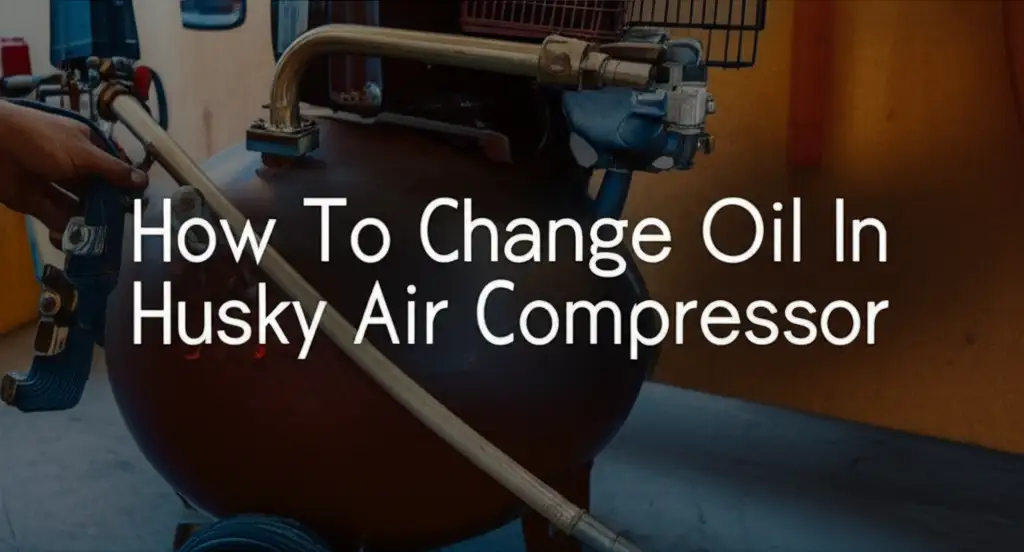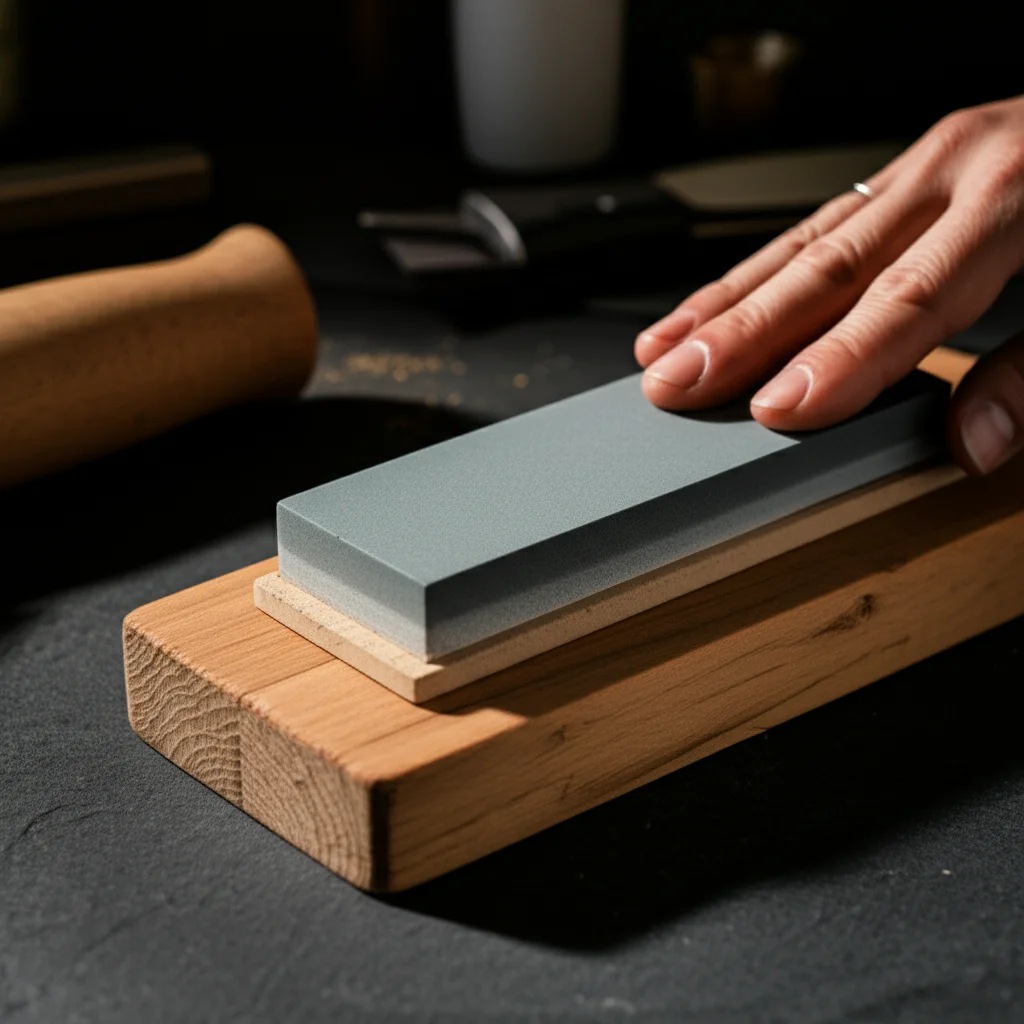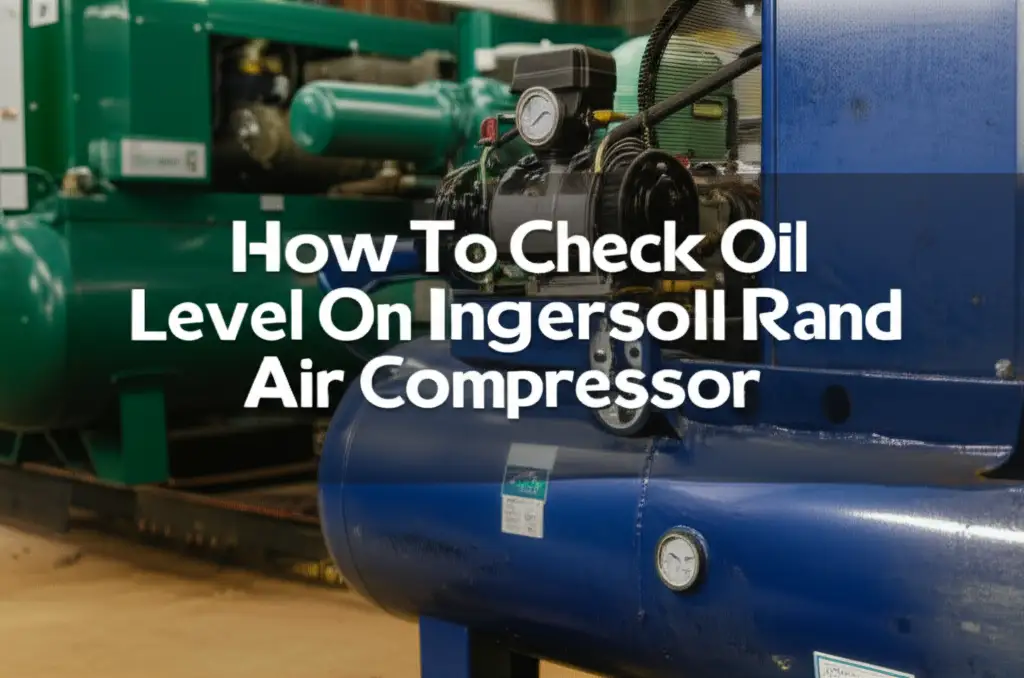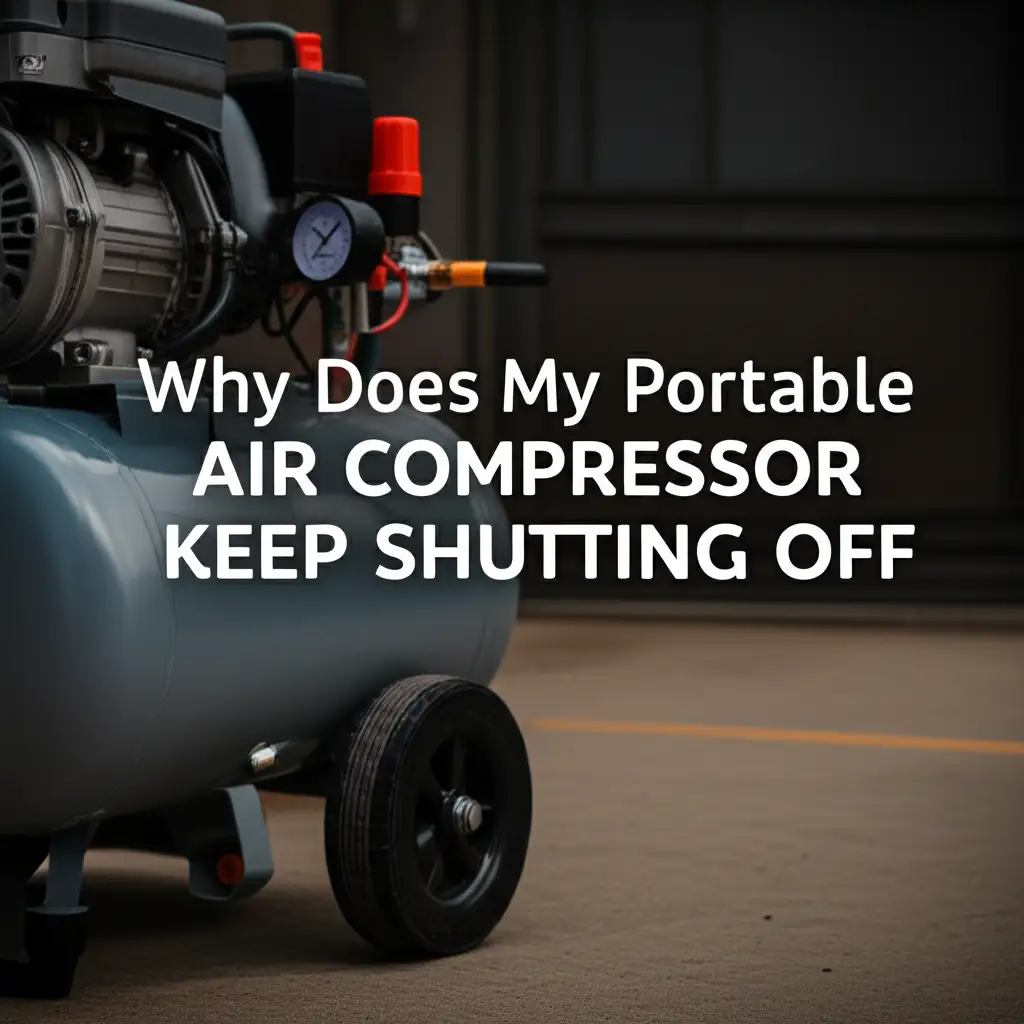· Todd Martin · Tool Care · 17 min read
How To Change Oil In Husky Air Compressor

Change Husky Air Compressor Oil: A Complete Guide
Air compressors are powerful tools for many tasks. From inflating tires to powering air tools, they make our work easier. Like any machine, air compressors need proper care to last. Regular oil changes are a crucial part of this care. Ignoring this simple task can lead to big problems. You risk reduced performance, overheating, and even machine failure.
This guide will show you exactly how to change oil in your Husky air compressor. I will walk you through each step. You will learn what tools you need, the right oil to use, and how to dispose of old oil. By the end, you will feel confident performing this essential maintenance. This helps your Husky compressor run smoothly for years.
Takeaway
Changing the oil in your Husky air compressor is a simple task that ensures its longevity and performance.
- Gather Supplies: Collect the correct oil, wrench, drain pan, funnel, and rags.
- Drain Old Oil: Warm up the compressor, then safely drain the used oil into a suitable container.
- Refill with New Oil: Add the manufacturer-recommended oil slowly, checking the level.
- Dispose Responsibly: Take used oil to a recycling center.
Changing the oil in a Husky air compressor involves warming the unit, safely draining the old oil, choosing the correct type and viscosity of new oil, and carefully refilling to the proper level. This regular maintenance ensures the compressor operates efficiently and extends its lifespan.
Why Your Husky Air Compressor Needs Regular Oil Changes
Understanding why oil changes matter is the first step. Air compressors work hard. They compress air, creating heat and friction within internal parts. The oil lubricates these moving parts. It reduces wear and dissipates heat. Clean oil protects the motor and pump. It keeps your compressor running at peak efficiency.
Over time, oil breaks down. It collects tiny metal particles and dirt. This dirty, degraded oil loses its ability to lubricate effectively. This leads to increased friction and heat. Parts wear out faster. Your compressor might run hotter or sound louder. Performance drops, and parts can fail prematurely.
Regular oil changes prevent these issues. Fresh oil maintains proper lubrication. It helps the compressor cool itself. This extends the life of your unit. It also ensures consistent air pressure and reduces energy consumption. Think of it like changing the oil in your car. It is a small effort that saves you from expensive repairs later.
Different compressor models have different oil change intervals. Always check your Husky owner’s manual for specific recommendations. Generally, for typical home use, changing the oil every 3-6 months or after 50-100 hours of operation is a good rule. High-usage scenarios might require more frequent changes. Keeping a log of your maintenance helps track these intervals.
Maintaining your air compressor properly also impacts its overall reliability. Just as you would learn how to check oil level on an Ingersoll Rand air compressor to ensure it’s running well, the same attention applies to your Husky. A well-maintained compressor is a dependable compressor.
Gathering Your Tools and Supplies for the Oil Change
Before you start, collect everything you need. Having all items ready saves time. It makes the process smooth and safe. I always lay out my tools first. This prevents searching mid-task. Make sure your workspace is clean and well-lit. This improves visibility.
Here is a list of essential items:
- Husky Compressor Owner’s Manual: This is your primary resource. It provides specific oil type recommendations and capacities.
- New Compressor Oil: Use only oil approved for air compressors. Check your manual for the correct type and viscosity. Do not use automotive engine oil.
- Wrench or Pliers: For removing the oil drain plug. The size will vary by model.
- Oil Drain Pan: A container to catch the old oil. Make sure it holds more than your compressor’s oil capacity.
- Funnel: For pouring new oil without spills.
- Rags or Shop Towels: For wiping spills and cleaning.
- Safety Glasses and Gloves: Always protect your eyes and hands.
- Container for Used Oil: For transporting the old oil to a recycling center. An old milk jug works well.
Confirm the oil type. Husky compressors often use specific compressor oil, not motor oil. Using the wrong oil can damage your pump. For example, knowing what kind of oil does my Craftsman air compressor use is similar to knowing the right type for a Husky. Each brand specifies its requirements. Some models use synthetic, others conventional. My manual told me exactly what to get. This simple check protects your investment.
Make sure your drain pan is large enough. Spilling oil can create a mess and a slip hazard. A good funnel helps prevent spills when refilling. Safety gear is non-negotiable. Oil can be hot and dirty. Protect yourself from splashes or contact.
Step-by-Step Guide to Draining Old Oil from Your Husky Compressor
Draining the old oil is the first major step. Do this carefully. Follow these instructions for a clean and effective drain.
1. Prepare the Compressor
First, turn off your Husky air compressor. Unplug it from the power outlet. This prevents accidental starts. It is a critical safety step. Release all air pressure from the tank. You can do this by opening the drain valve at the bottom of the tank. Let the air escape until the pressure gauge reads zero.
If your compressor has been running, the oil will be warm. Warm oil drains more easily. It flows thinner and carries more contaminants out. If it has been sitting cold, run it for 5-10 minutes. This warms the oil. Then, turn it off and unplug it again.
2. Locate the Oil Drain Plug
The oil drain plug is typically at the bottom of the compressor’s pump housing. Sometimes, it might be on the side, near the base of the pump. Consult your Husky owner’s manual if you have trouble finding it. My manual showed a clear diagram. It usually looks like a bolt or a cap.
Place your oil drain pan directly beneath the drain plug. Position it to catch all the oil. You might need to tilt the compressor slightly if it is a portable model. This ensures all oil flows into the pan.
3. Drain the Oil
Use your wrench or pliers to carefully loosen the drain plug. Turn it counter-clockwise. Once loose, remove the plug completely. Be ready for oil to flow out immediately. It might come out quickly.
Let the oil drain completely. This can take several minutes. You might see the oil stream slow to a trickle. Once the oil stops, you can tilt the compressor slightly to encourage any remaining oil to drain out. Wipe around the drain hole with a clean rag. This removes any residue or particles.
4. Replace the Drain Plug
Once all the oil has drained, replace the drain plug. Screw it in hand-tight first. Then, use your wrench to tighten it firmly. Do not overtighten the plug. Overtightening can strip the threads. This can cause leaks. A snug fit is enough to prevent leaks. My manual specified a torque setting, which I always follow.
Proper draining ensures you remove as much old, contaminated oil as possible. This prepares the compressor for fresh lubrication. For general air compressor maintenance, you might also consider how to clean air compressor tank after a certain period, as sludge can build up there too. This ensures your entire system stays clean and performs optimally.
Choosing the Right Oil for Your Husky Air Compressor
Selecting the correct oil is vital. Not all oils are created equal for air compressors. Using the wrong type can cause serious damage. It affects lubrication, heat management, and component lifespan. I always double-check this step.
1. Consult Your Owner’s Manual
Your Husky air compressor’s owner’s manual is the definitive source. It specifies the exact type of oil required. It will usually list the viscosity (e.g., SAE 30, ISO 100) and whether it should be conventional or synthetic compressor oil. Some manuals even list specific brand recommendations.
Husky typically recommends a non-detergent air compressor oil. Detergent oils, like those used in cars, can cause foaming in compressors. They can also leave deposits. This harms pump components. Always avoid automotive motor oils. They contain additives that are not suitable for compressor pumps.
2. Understand Oil Types and Viscosity
- Conventional Compressor Oil: This is standard mineral oil. It works well for many basic compressors. It requires more frequent changes than synthetic oil.
- Synthetic Compressor Oil: Synthetic oils offer superior performance. They handle higher temperatures better. They also reduce wear and can extend oil change intervals. Many modern Husky compressors benefit from synthetic oil. If your manual allows, upgrading to synthetic can be a good choice.
- Viscosity (Weight): This refers to the oil’s thickness. Common viscosities for air compressors include SAE 30 or ISO 100. The right viscosity ensures proper flow and lubrication at operating temperatures. Using an oil that is too thin or too thick can lead to problems. Too thin, and it won’t protect parts enough. Too thick, and it may not circulate correctly.
For example, just as you would confirm what kind of oil does an Ingersoll Rand air compressor take, you must do the same for your Husky. Each manufacturer designs its pumps for specific oil properties. Using the wrong oil can void your warranty and lead to premature wear.
3. Where to Buy Compressor Oil
You can find compressor oil at hardware stores, home improvement centers, or online retailers. Look for products specifically labeled “air compressor oil.” Avoid generic oils that do not specify their suitability for compressors. If you are unsure, ask a store associate or contact Husky customer support. Investing in the right oil saves you money on repairs down the line. I usually buy a little extra just in case of spills or future needs.
Properly Refilling Your Husky Air Compressor with New Oil
Once the old oil is drained, it is time to add fresh oil. This step also requires care to ensure the correct fill level. An improper oil level can harm your compressor.
1. Locate the Oil Fill Port
The oil fill port is typically on top of the compressor pump. It might be a small cap or a dipstick housing. Remove the oil fill cap or dipstick. Set it aside in a clean place. This port is where you will pour the new oil.
Many Husky compressors have a sight glass or a dipstick to check the oil level. Familiarize yourself with this before filling. The sight glass is usually a clear window on the side of the pump. The dipstick will have “FULL” and “ADD” or minimum/maximum marks. Knowing how to check oil level on an Ingersoll Rand air compressor is a similar skill that applies here.
2. Add New Oil Slowly
Place a clean funnel into the oil fill port. Slowly pour the new, recommended compressor oil into the pump. Do this gradually. Pouring too quickly can cause spills or air bubbles. It can also make it harder to accurately gauge the fill level.
Watch the sight glass as you pour. If your compressor has a dipstick, remove it periodically to check the level. Add oil in small increments. Stop pouring when the oil level reaches the “FULL” mark on the dipstick or the center of the sight glass. Do not overfill.
3. Check the Oil Level
After adding the oil, wait a few minutes. This allows the oil to settle. Re-check the level. If using a dipstick, insert it fully, then remove and read. The oil level should be between the “FULL” and “ADD” marks, or within the designated range on the sight glass.
If you overfilled, you must drain the excess oil. Too much oil can cause foaming. It can also lead to pressure build-up and leaks. You might need to loosen the drain plug again slightly to let out a small amount. If the level is too low, add more oil until it reaches the correct mark.
4. Replace the Oil Fill Cap
Once the oil level is correct, replace the oil fill cap or dipstick. Tighten it securely. Make sure it is sealed properly to prevent leaks. My manual often emphasizes making sure the seal is good to prevent contaminants from entering.
After refilling, you are almost done. Your compressor now has fresh, clean oil. This greatly improves its performance and lifespan. You are ready for the next task with a well-maintained tool.
Disposing of Used Compressor Oil Safely and Responsibly
Used oil contains contaminants and is a hazardous waste. Proper disposal is not just good practice; it is often required by law. Never pour used oil down drains, onto the ground, or into trash bins. This can pollute water and soil. I always make sure to dispose of it correctly.
1. Collect and Store Used Oil
While draining the old oil, collect it in a dedicated drain pan. Once drained, transfer it into a clean, sealable container. Old milk jugs or empty oil bottles with screw caps work well. Make sure the container is clearly labeled “Used Motor Oil” or “Used Compressor Oil.” This prevents accidental misuse.
Store the container upright. Keep it in a safe place. Keep it away from children and pets. Do not mix it with other liquids. Mixing oil with solvents, paints, or antifreeze can make it unrecyclable. This means it becomes even harder to dispose of properly.
2. Find a Recycling Center
Most automotive repair shops, car parts stores, and municipal waste facilities accept used oil for recycling. Many communities have specific drop-off points. You can check your local government’s waste management website. Some sites also provide search tools to find nearby recycling centers.
Call ahead to confirm they accept used compressor oil. Most places that accept used motor oil will also accept used compressor oil. However, it’s always best to verify. They will ensure it gets processed correctly. This helps prevent environmental damage.
3. Follow Recycling Center Guidelines
When you drop off your used oil, follow the center’s instructions. They might ask you to pour it into a specific drum. They might want you to leave it in your container. Be prepared to transfer it if necessary. Remember to take your empty container back if they do not collect it.
Proper disposal protects our environment. It also helps conserve resources. Used oil can be re-refined into new lubricants. It can also be used as a fuel source. This sustainable practice completes the oil change process responsibly. Knowing how to manage hazardous materials, even small ones, is important for home safety and environmental health.
Troubleshooting Common Oil Change Issues and Maintenance Tips
Even with careful steps, you might face minor issues. Knowing how to troubleshoot helps. Also, good maintenance practices keep your Husky compressor in top shape.
1. Common Oil Change Issues
- Oil Leaks After Change:
- Loose Drain Plug/Fill Cap: Check both. Tighten them firmly. Do not overtighten.
- Damaged Gasket/O-ring: The drain plug or fill cap might have a rubber O-ring or a gasket. If it is cracked or worn, it needs replacement. You can often find replacement parts online or at hardware stores.
- Cracked Pump Housing: This is rare but serious. If you see oil seeping from the pump body itself, professional repair is needed.
- Wrong Oil Type/Level Used:
- Symptoms: Compressor runs hotter, makes strange noises, or has reduced performance.
- Solution: Immediately drain the incorrect oil. Refill with the correct type and amount. Refer to your manual. Running it with wrong oil causes damage.
- Old Oil Not Draining Fully:
- Oil Too Cold: Run the compressor for 5-10 minutes to warm the oil. Turn it off and unplug before draining again.
- Blocked Drain Port: Very rare, but a stubborn clog could prevent flow. Use a thin wire to gently probe. Be careful not to damage anything.
- Compressor Not Starting After Oil Change:
- Power Issue: Check if it is plugged in. Check the circuit breaker.
- Low Oil Switch: Some compressors have a low oil shut-off switch. Ensure the oil level is correct. If it is, the switch might be faulty.
2. General Maintenance Tips for Your Husky Compressor
- Regular Drain Tank: Open the drain valve at the bottom of the tank daily or after each use. This releases condensation. Moisture causes rust. Rust damages the tank and contaminates air. For a thorough clean, learn how to clean air compressor tank.
- Clean Air Filter: Inspect and clean or replace the air filter regularly. A dirty filter restricts airflow. This makes the compressor work harder. It reduces efficiency and can damage the motor.
- Check Belts and Hoses: If your compressor has belts, check their tension and condition. Look for cracks or fraying. Inspect hoses for leaks or damage. Replace any worn components.
- Lubricate Moving Parts: Apply a small amount of lubricant to any exposed moving parts, like pivot points on regulators.
- Listen for Unusual Noises: Pay attention to your compressor’s sounds. New or louder noises often signal a problem. Address them promptly.
- Store Properly: Store your compressor in a dry, protected area. This prevents rust and weather damage.
- Consult the Manual: Your Husky owner’s manual is the best source for specific maintenance schedules and troubleshooting specific to your model. It often includes advice on how to turn on a Husky air compressor 8-gallon or similar models, ensuring you handle it correctly from the start.
By following these tips, you extend your Husky air compressor’s life. You ensure it operates safely and efficiently. Regular maintenance prevents small issues from becoming expensive repairs.
Frequently Asked Questions About Husky Air Compressor Oil Changes
How often should I change the oil in my Husky air compressor?
You should change the oil in your Husky air compressor every 3 to 6 months. Another guideline is after 50 to 100 hours of operation. For heavy use, consider more frequent changes. Always check your specific Husky model’s owner’s manual. It provides the most accurate maintenance schedule recommendations.
What type of oil does a Husky air compressor use?
Husky air compressors typically use a non-detergent compressor oil. This oil is specifically designed for air compressor pumps. The exact viscosity (e.g., SAE 30, ISO 100) will vary by model. Always consult your Husky owner’s manual to find the precise oil type and viscosity recommended for your unit. Never use automotive motor oil.
Can I use synthetic oil in my Husky air compressor?
Yes, you can use synthetic oil in many Husky air compressors if the manufacturer permits it. Synthetic compressor oil often offers superior performance. It handles higher temperatures and can extend oil change intervals. Check your owner’s manual first to confirm compatibility. Using synthetic oil is often an upgrade that can benefit your compressor’s lifespan.
What happens if I don’t change the oil in my air compressor?
If you do not change your air compressor’s oil, it will break down and accumulate contaminants. This leads to increased friction and heat. The compressor will run less efficiently. It will also experience accelerated wear on internal parts. Ultimately, this can result in reduced performance, overheating, and premature pump failure.
How do I dispose of used compressor oil?
Dispose of used compressor oil responsibly. Collect the old oil in a sealed container, such as an old milk jug. Do not pour it down drains or into the trash. Take it to a local automotive repair shop, car parts store, or municipal waste facility that accepts used motor oil for recycling. Call ahead to confirm their acceptance policy.
How do I check the oil level on my Husky air compressor?
Most Husky air compressors have a sight glass or a dipstick for checking the oil level. The sight glass is a clear window on the side of the pump. The oil level should be visible within the designated marks. If your compressor has a dipstick, remove it, wipe it clean, reinsert it fully, and then remove it to read the oil level against the “FULL” and “ADD” marks.
Conclusion
Changing the oil in your Husky air compressor is a straightforward task. It is also incredibly important. You ensure your tool runs effectively and lasts for many years. By following these steps, you protect your investment. You maintain its peak performance. From gathering the right tools to safely draining old oil and refilling with new, each step contributes to your compressor’s health.
Remember to always consult your Husky owner’s manual for specific instructions. It is your best resource for model-specific details. Regular maintenance, including these vital oil changes, prevents costly repairs. It keeps your Husky air compressor ready for any task. Take action today to give your Husky the care it needs. Your reliable compressed air supply depends on it. Happy compressing!





